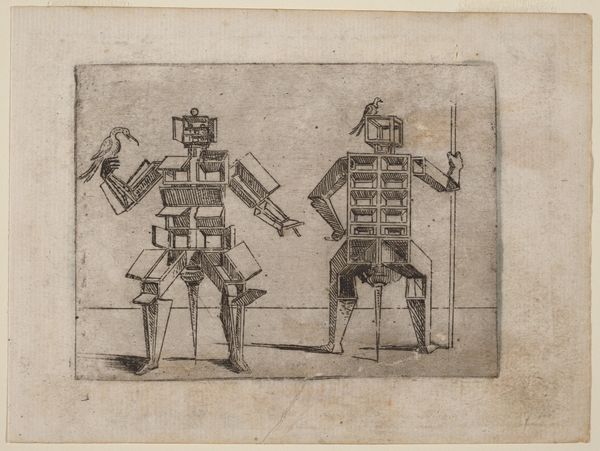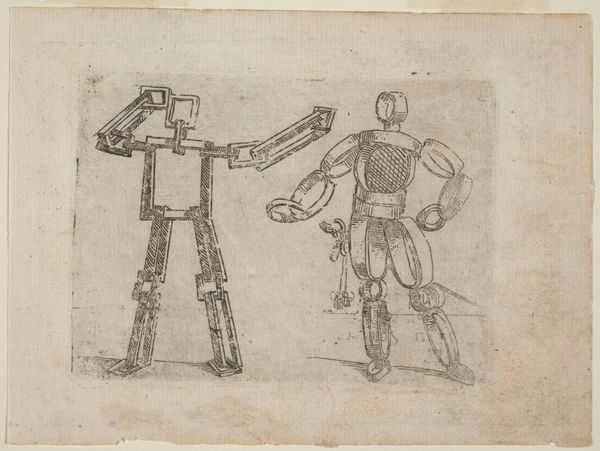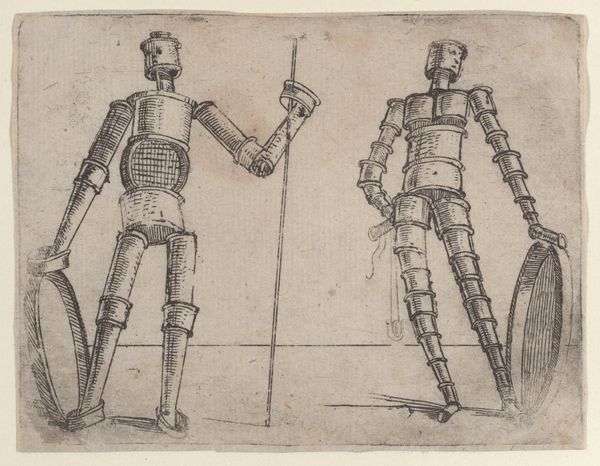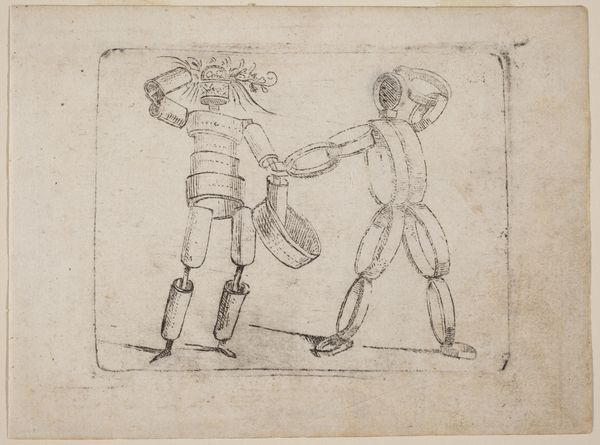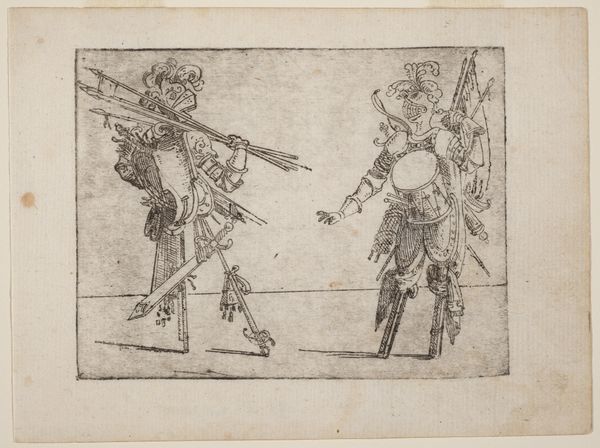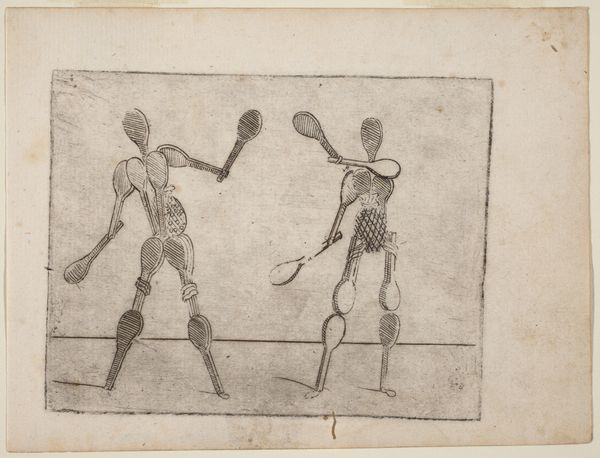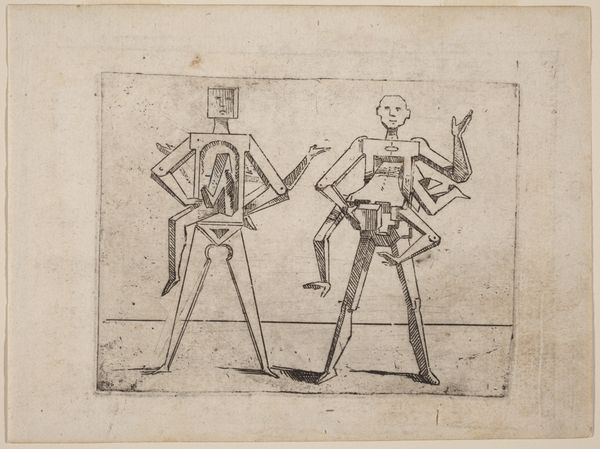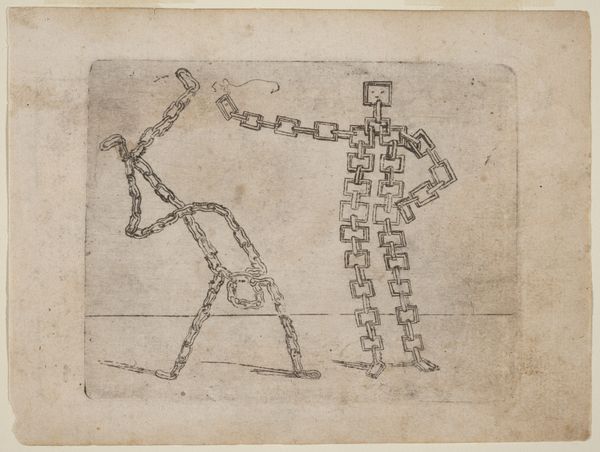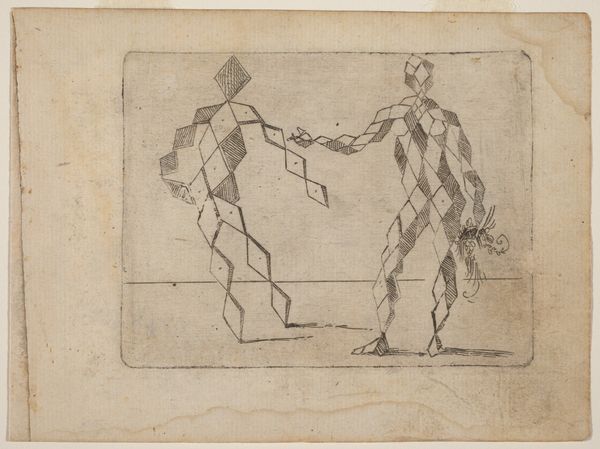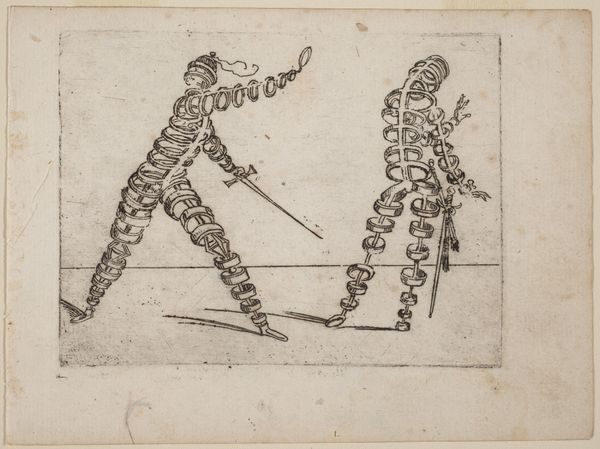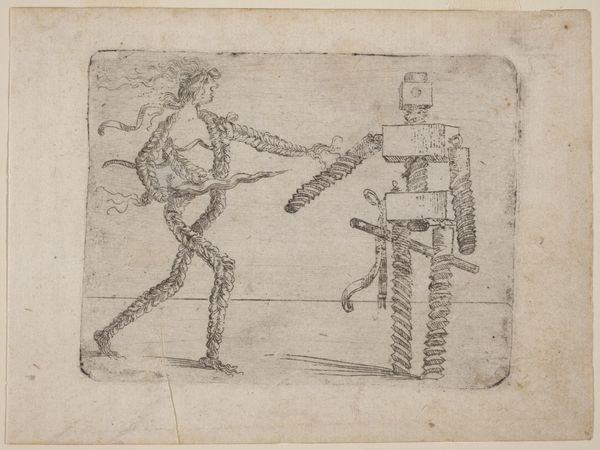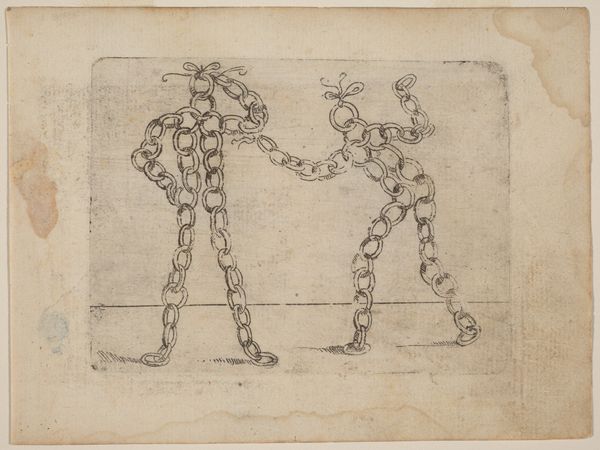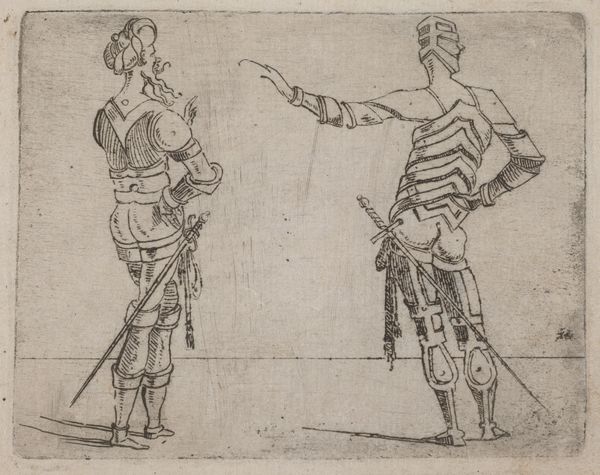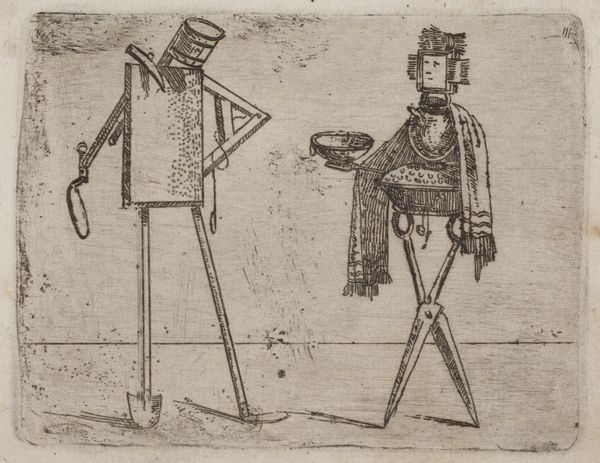
print, etching
# print
#
etching
#
mannerism
#
figuration
#
history-painting
Copyright: National Gallery of Art: CC0 1.0
Curator: Here we have Giovanni Battista Bracelli's etching, "From 'Bizzarie di varie Figure'," created in 1624. It's an intriguing example of Mannerist printmaking. Editor: My immediate reaction is... unsettling playfulness. There's something quite uncanny about these constructed figures, a real tension between the grotesque and the humorous. Curator: Absolutely. Bracelli masterfully utilizes line and form here. Notice how the figures are constructed from disparate, almost architectural elements, lending them a disjointed yet strangely harmonious structure. The articulation of each form is deliberate, contributing to the overall composition. Editor: And what about the implications of representing human-like forms in this way? To me, this resonates with the social anxieties of the era. The Thirty Years' War was raging—a time of intense upheaval. Are these figures, assembled from fragmented parts, a reflection of a fragmented society, dehumanized by conflict? Curator: That's a compelling reading. Formally, one could argue that Bracelli is exploring the very nature of representation. He's dissecting the human form and reassembling it according to an internal logic, almost as if he's playing with the alphabet of visual language. The ambiguity between body and artifice really shines. Editor: True. Yet the "bizzarie"—the oddities—invite further interrogation. These figures, seemingly engaged in some unknown activity with a ball, suggest a distortion of power relations. What does it mean to depict humanity through this lens of mechanical absurdity? Are these the cogs of war? The playthings of some aristocratic elite? The complete disregard of common labor and social conditions is quite overt. Curator: Perhaps, but it’s also a display of the artist's virtuosity. See how Bracelli renders depth and volume purely through etching? The contrasting values and textures create a surprisingly tangible presence. Also, there are references to classical forms—a nod to artistic traditions—while simultaneously subverting them through playful deconstruction. Editor: Ultimately, this piece feels profoundly relevant today. We still grapple with bodies mediated through technological constructs and fractured realities, while disparities continue to widen. Curator: A timeless piece. Thank you for those considerations, hopefully this gives a perspective on a work that reveals new layers each time.
Comments
No comments
Be the first to comment and join the conversation on the ultimate creative platform.
